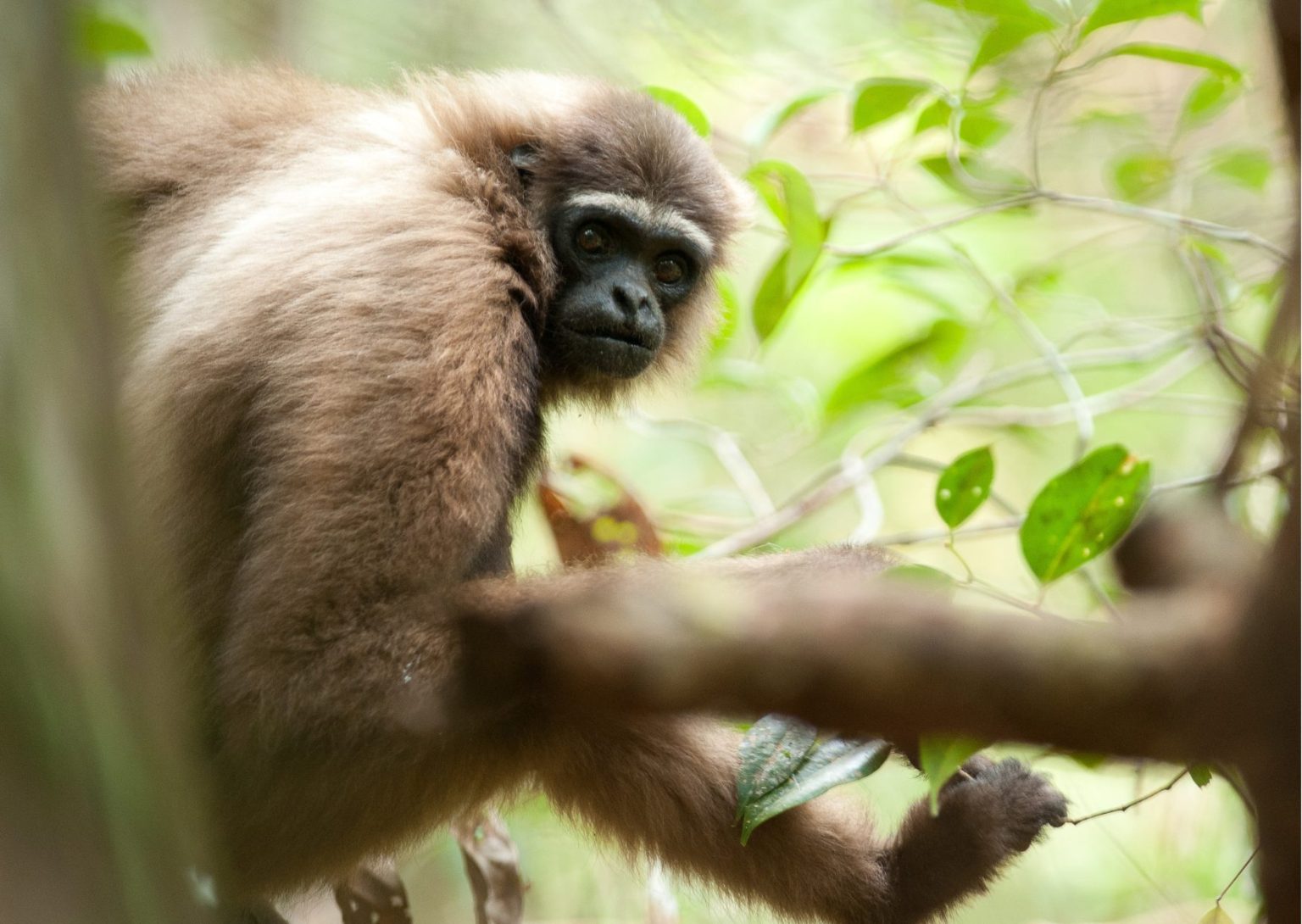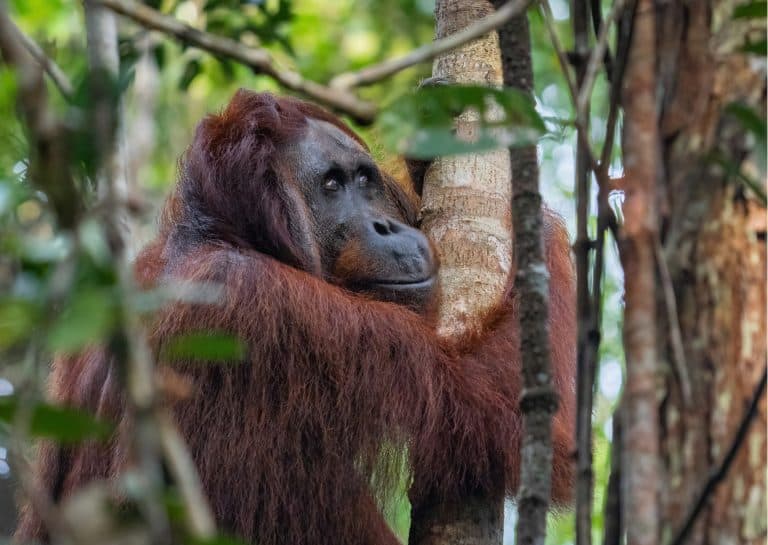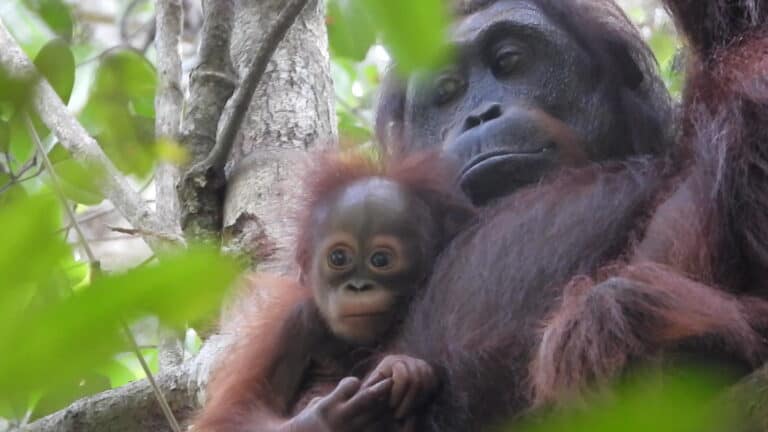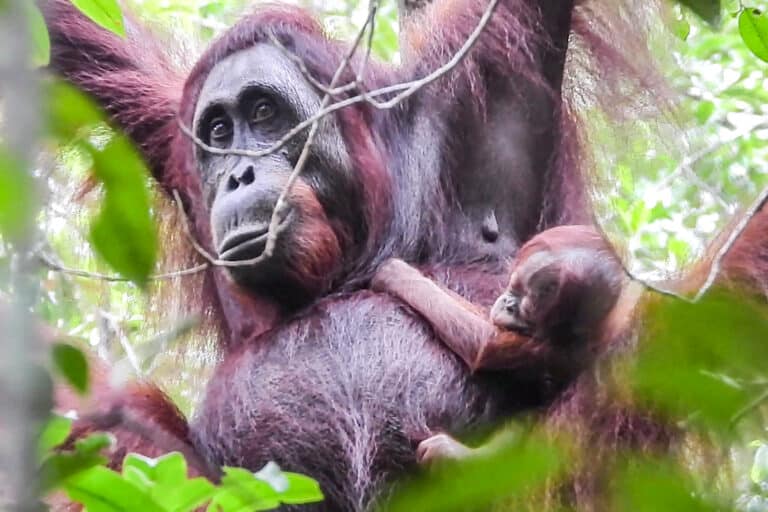Ever wondered what 20 years of gibbon-watching can teach us?
Since 2005, we’ve been gathering one of the world’s longest continuous datasets on wild gibbon behaviour. In that time, we’ve produced 69 peer-reviewed papers and book chapters, plus a stack of reports, training materials, and even DVDs, all to inform the protection of these charismatic small apes.
Our research has not only deepened our collective understanding of Borneo’s gibbons, but also helped to raise their profile on the global conservation stage. This special review looks back at two decades of discoveries, revealing fascinating insights into how gibbons live and adapt to the changing forests around them. From their surprisingly consistent home territories to their impressive ability to adjust to human disturbance (up to a point!), these long-term findings are helping us pinpoint exactly what gibbons need to survive – and thrive.

Little – but not lesser – apes!
Contrary to popular misconception, gibbons are apes not monkeys! These so-called ‘lesser apes’ can be distinguished from the great apes – including humans and orangutans – by their diminutive size, small social groups, and lack of nest-building behaviour. Despite gibbons representing 20 of the 28 living ape species, they receive only a fraction of the funding and attention given to their great ape cousins. This, combined with the fact that they are one of the most endangered groups of primates (all but one of the 20 gibbon species are currently at risk of extinction), makes gibbon conservation an urgent priority.
Borneo is home to four species of gibbon – a fifth of the world’s gibbon species – all of which are classed as Endangered on the IUCN Red List. In addition, all four of the island’s gibbons are endemic, meaning they can be found nowhere else. However, despite their nationally protected status in Indonesian Borneo, Borneo’s gibbons are under immense pressure from habitat loss driven by forest fires, overexploitation, conversion to agriculture and human expansion. To develop effective conservation strategies and counter these threats, we first need to understand the gibbons’ behaviour, ecology, and population dynamics. If we don’t know how many individuals there are, where they live or what they need to survive, how can we hope to protect them?
Our gibbon research and conservation efforts span three unique ecosystems in Central and Southwestern Borneo, each one home to a significant population of gibbons. Of the four gibbon species in Borneo, two occur at our field sites: the Bornean white-bearded gibbon, which is present in all three landscapes, and Müller’s gibbon, at the northwestern edge of its range in Borneo’s highlands. Whilst we don’t study Müller’s gibbons directly, we do study their hybrid offspring, found along a small area of overlap in the two parent species’ ranges.
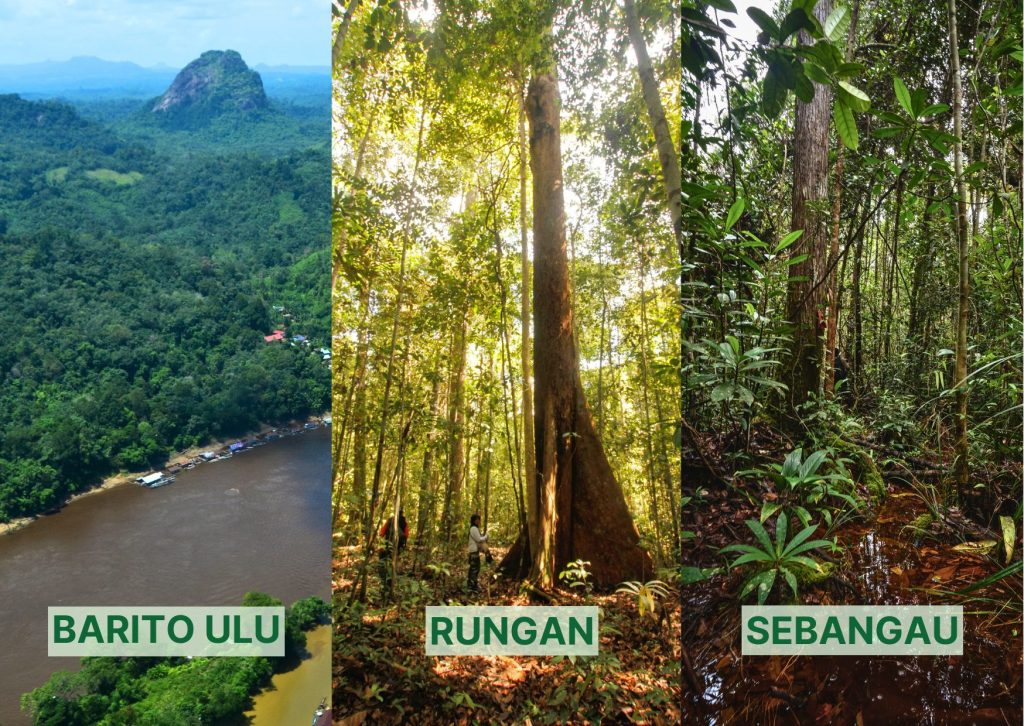

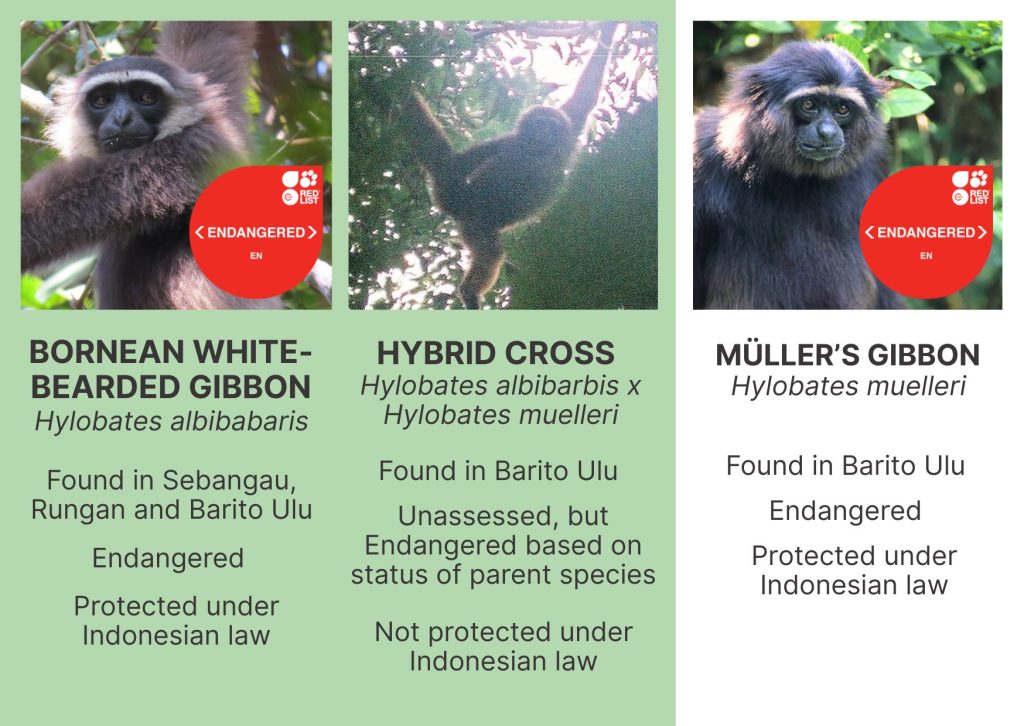
Innovative research methods
How do you study animals that live way up in the canopy and can traverse the treetops fast enough to outpace an Olympic sprinter?
We use advanced conservation technology and analysis software to help shed light on the behaviour, distribution and population dynamics of Borneo’s gibbons. Camera traps can be installed in trees to reveal new insights into gibbon behaviour at close range, whilst bioacoustic methods allow us to estimate gibbon population density and analyse their calls via sound analysis.
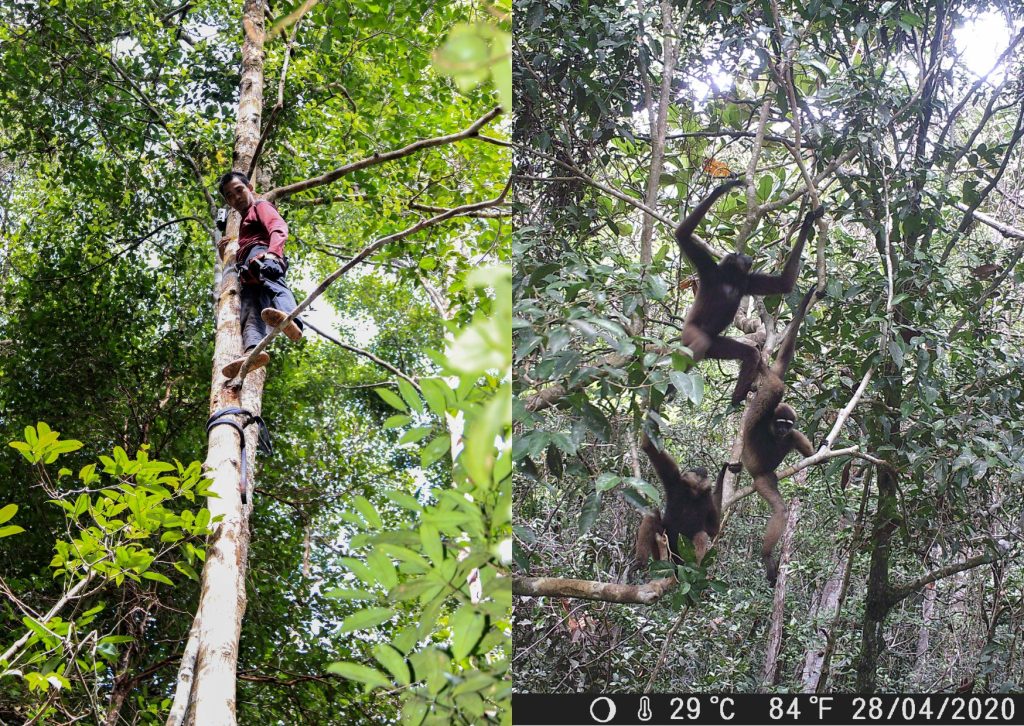

Sometimes, though, there’s no substitute for direct field observations. Our highly skilled team of field researchers have been tracking gibbons for decades and can recognise familiar individuals by sight, even from way down on the forest floor!
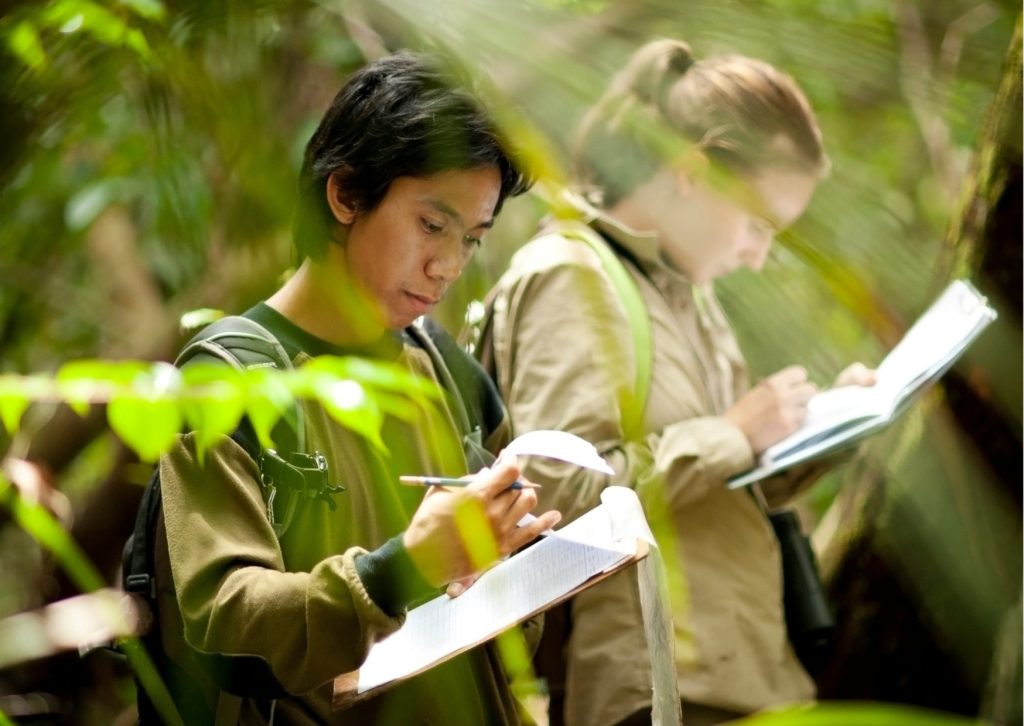
So, what have we learnt?
In short, a lot!
But for brevity’s sake, here are some of our most significant findings over 20 years of gibbon research:
Gibbons sing to communicate with their family and neighbours – their songs help strengthen bonds, defend their territory, and even find a mate. But when wildfire smoke fills the air, it disrupts their songs. Thick haze makes it harder for their calls to travel and can affect their voices. As a result, gibbons sing significantly less during periods of heavy smoke, impacting their ability to stay connected in the dense forest.
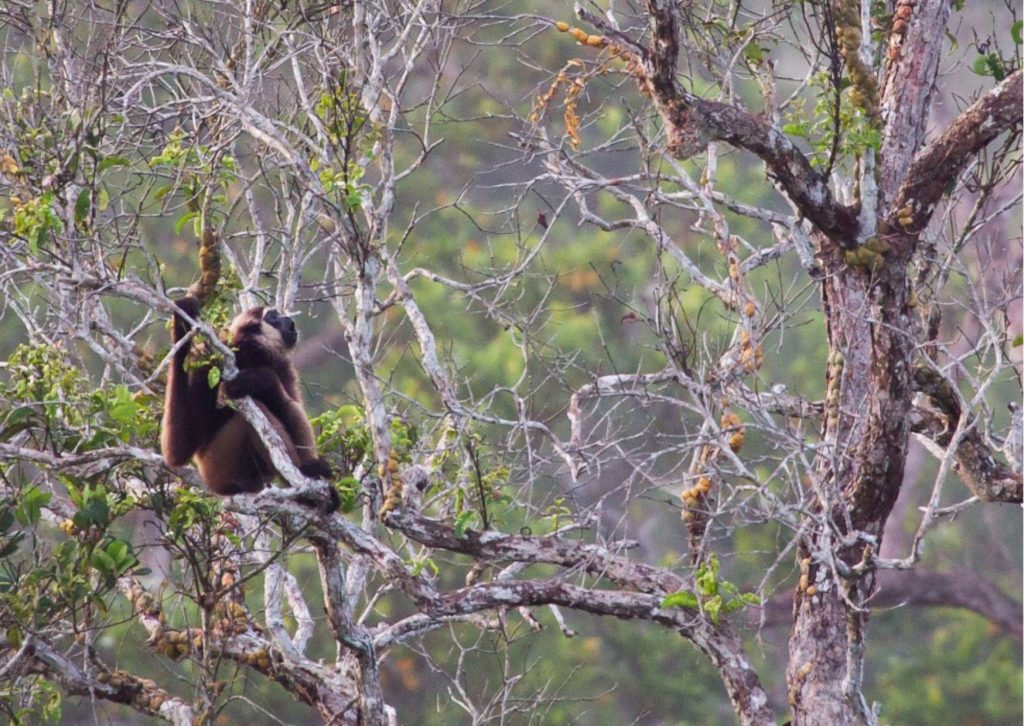
Gibbons have clearly defined home ranges, which remain consistent over time. This strong site fidelity means that, in the absence of deforestation or major habitat disturbance, gibbons will remain in the same area of forest for decades.
You probably don’t associate gibbons with swampy habitats, but peat-swamp and lowland forests are critical habitat for the Bornean white-bearded gibbon. Our early population surveys in Sebangau National Park found that the peat swamp forest represents a major stronghold for the species, with an estimated population size of 22,000 individuals (one of the largest known populations remaining!)
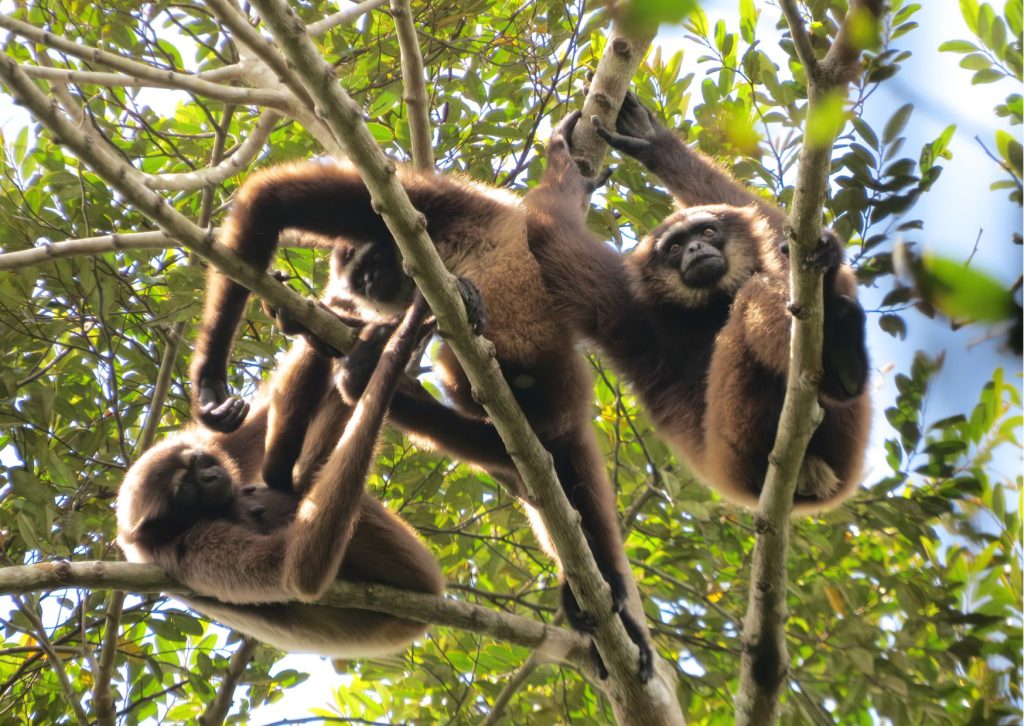
Like many cultures across gibbon range countries, Borneo’s Indigenous Dayak communities have a positive relationship with gibbons, reflected in various folk tales and traditional beliefs. Gibbons’ cultural significance makes them an important tool for outreach and conservation education.

Gibbon conservation outside protected areas is essential and needs to be balanced with work in protected areas. Although Bornean white-bearded gibbons occur in six nationally protected areas in Indonesian Borneo, it is likely that the majority of populations will fall outside of these.
Conservation Impact
Research is an integral part of our mission to protect and enhance Borneo’s forests for the benefit of both people and wildlife. Our multi-species conservation approach provides a science-driven framework for long-term biodiversity protection. By integrating ecological research, habitat restoration, and community engagement, we aim to safeguard Borneo’s biodiversity for generations.
BNF is a key centre of excellence for training other organisations in gibbon population density monitoring. Our highly trained research team are often called upon to provide training and support to other NGOs across Borneo for surveying gibbons, as well as contributing to the national gibbon conservation plans (Indonesian Gibbon Road Map 2020-2030) and collaborating with the IUCN Species Survival Commission Section on Small Apes. In 2018, we contributed to the re-assessment of the Bornean white-bearded gibbon on the IUCN Red List, helping to set conservation priorities for the species.
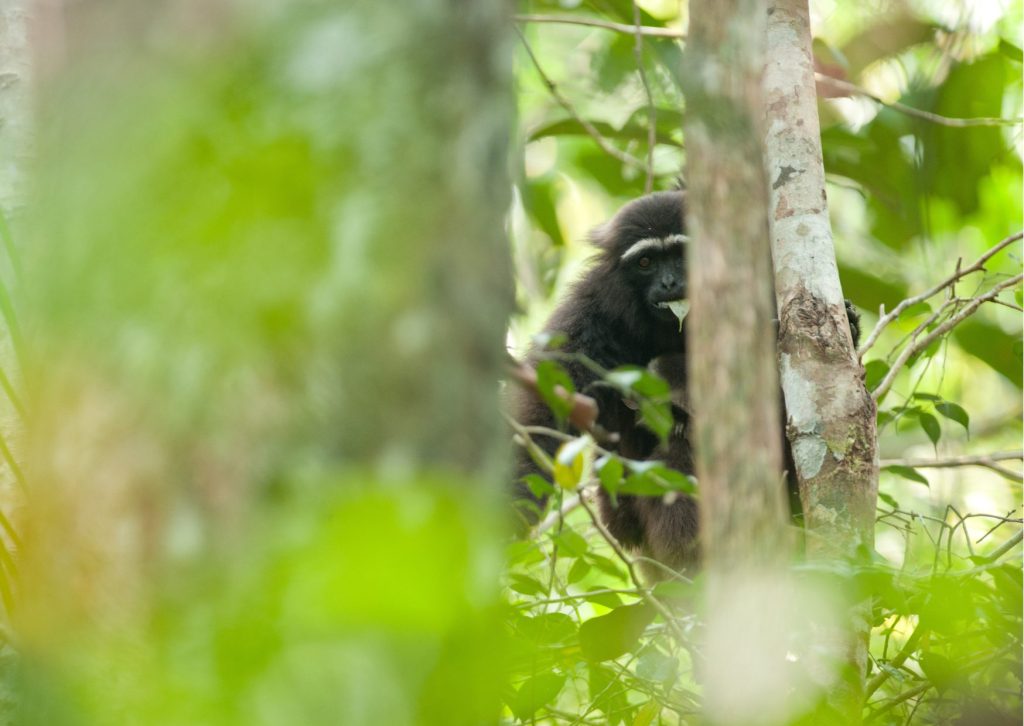
What’s next?
Continuing and expanding our use of cutting-edge science to better understand and protect gibbons across three key landscapes! By combining acoustic monitoring with advanced analysis techniques, we’re improving population density estimates for these elusive apes, tracking long-term recovery trends, and mapping landscape connectivity to identify critical corridors for movement and territory establishment. These insights will help us target conservation actions more effectively and ensure thriving gibbon populations for the future.
We’re so grateful to our gibbon partners for making all this possible, with special thanks to the Arcus Great Apes & Gibbons Program, US Fish & Wildlife Ape Fund, and zoos in the UK, Europe and the USA.

